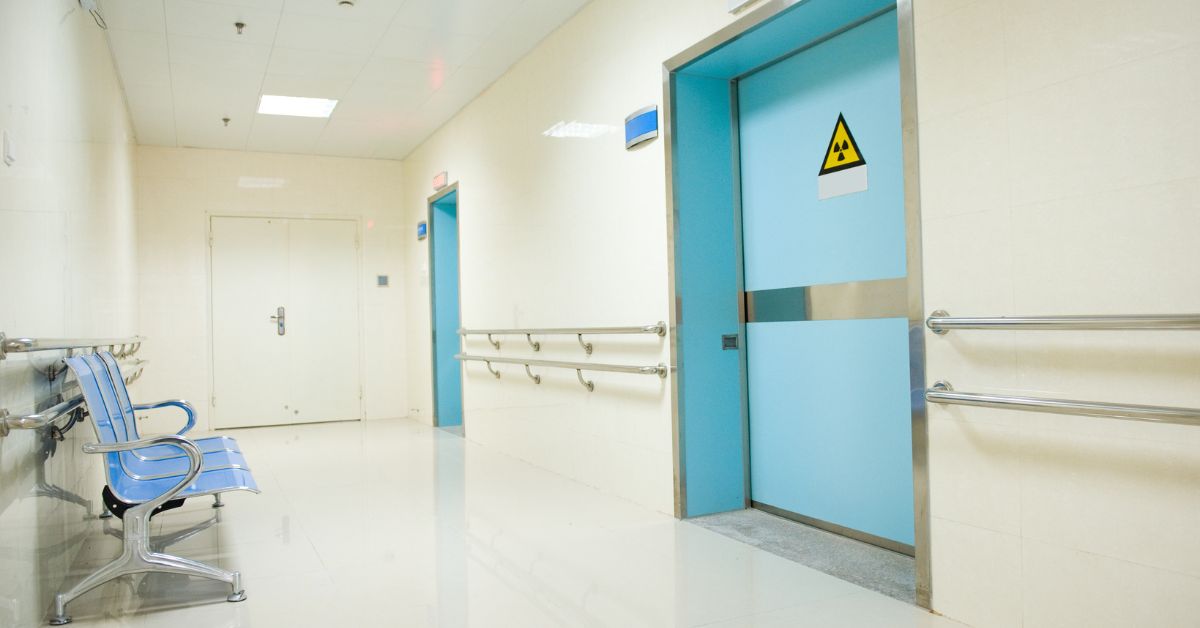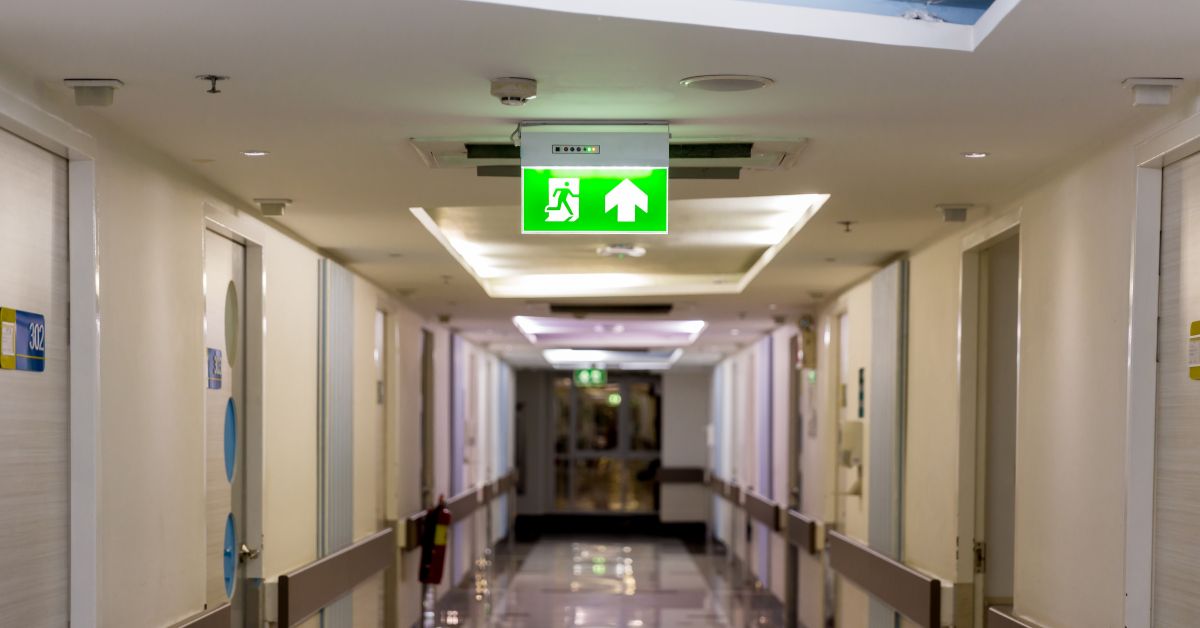How To Improve Hospital Safety With Door Hardware

Integrate Touchless and Antimicrobial Systems
We all know how easily infections can transfer with a single touch. Touchless systems rely on motion sensors or voice commands to activate without touching the door physically. From improving ADA compliance to reducing points of contact, there are multiple benefits to introducing touchless door systems in your hospital. We will look at them down below.
Reduce Pinch Points for Pediatrics
One concern in pediatric units is pinch-point-related injuries. Traditional swing doors may harm children if their hands get stuck between the door hinges. In contrast, touchless doors equipped with motion sensors detect human movements before closing, reducing the chance of injury. Touchless doors also allow medical equipment to move seamlessly between rooms and can improve the level of care you provide.
Improve Sterility
Sterility is a critical factor in the prevention of infectious diseases. Operating rooms and isolation units require sterilization after every use, or it can endanger staff and patients. Manual door handles are common touch points, which can potentially harbor bacteria and viruses that increases the risk of cross-contamination. Adding touchless systems like wave-sensor doors can maintain hygiene protocols while lowering the need for rigorous sterilization.
Enhance Accessibility features
ADA accessibility standards require doors in public spaces to be accessible. Switching to touchless systems can enhance your hospital’s accessibility, making it convenient for people with disabilities. The ADA requires door hardware to allow one-hand operation. You can take it a step further by removing the need for physical touch and making it even easier to operate. Shifting into a more accessible door hardware also shows your patients your commitment to inclusivity and patient-centered care, giving you a competitive edge in the market.
Antimicrobial Door Hardware
Another way to reduce cross-contamination is by installing door hardware with antimicrobial materials. Doorknobs and handles are frequently touched surfaces that can carry and spread infection, especially in a hospital with hundreds of people coming in and out all the time. Some door hardware technologies include a UV-C light to deactivate bacteria and introduce materials that actively fight viruses. This technology can reduce the frequency of disinfection needed for public spaces.

Door Access Control Systems
Adding door access control systems, such as a card readers, restricts access to sensitive rooms to authorized personnel only. The Health Insurance Portability and Accountability Act has regulations hospitals must follow, including keeping an audit trail of access to medical records storage. A door access control system can ensure that you comply with these regulations by logging every entry and exit to highly sensitive areas.
Zoning Restricted Areas
Hospitals are high-traffic environments with many people pouring in every day. It is crucial to implement a system that prevents public access to restricted areas. Sensitive materials like patient records and expensive medical equipment are prone to theft if left unsupervised. A door access control system can limit access to these areas only to licensed and authorized personnel. Key Cards and IDs are also harder to duplicate compared to traditional keys, adding an extra layer of security to your hospital.
Easier Visitor Management
Aside from patients, hospitals also must worry about visitors. A door access control system can restrict visitors from unintentionally wandering into staff-only areas. You can automatically enforce boundaries on visitors, protect vulnerable patients, and allow your medical staff to focus on providing medical care. Minimizing access to certain rooms can also reduce the spread of infection from other patients.

Emergency Exit Door Solutions for Crisis Management
Hospital infrastructure must prevent the spread of infections and provide a seamless response to emergencies. Implementing emergency exit door solutions is critical for quick evacuation during emergencies. There are multiple aspects you must consider when it comes to exit doors; let’s take a look at them below.
Illuminated Exit Paths
Accidents and emergencies are unpredictable, and it is important to consider all possible situations when designing exit paths. For example, a fire can cause a lot of smoke, making it more challenging to perform evacuations. Illuminated exit paths can guide patients and staff to proper exits in low-visibility conditions. Make sure to place your exit door in a clear, unobstructed pathway with proper signage and lighting designed for high-stress situations.
Emergency Lockdown Systems
A lockdown system is often the first response to emergencies. Choose a tiered lockdown system that allows security teams to select which areas to seal off while others remain functional. Hospitals must ensure that lifesaving treatments and evacuation paths are never compromised while other areas are locked down for risks.
Durability and Compliance
Exit devices should be designed with durability and compliance in mind. Durability is significant for high-traffic environments like hospitals. Doors must withstand frequent use from stretchers, wheelchairs, and carts. The National Fire Protection Association also requires fire-rated doors that can contain the spread of flames and smoke, which is why the durability and design of your exit doors are critical.
Creating a Safer Future With Smarter Door Hardware
Hospital safety goes well beyond medical care; it’s about creating an environment where patients, staff, and visitors feel protected and supported. When considering how to improve hospital safety with door hardware, small features can make a significant difference.
Integrating touchless systems can improve hygiene and minimize preventable injuries. Antimicrobial finishes can play a vital role in reducing the spread of illnesses and infections. It is also critical to inspect and upgrade security systems for vulnerable and sensitive areas like the patient records storage room. Monitoring and zoning door hardware can increase security in these areas and keep your hospital HIPAA-compliant.
Lastly, an innovative and modern emergency exit system offers critical solutions for managing crises, including ensuring smooth evacuations. Hospitals must be ready for any kind of emergency, which is why the durability of your exit systems is vital for containing threats and natural disasters.
By adopting these innovations, hospitals can transform their facilities into safer, more efficient spaces. These solutions aren’t just upgrades; they’re essential investments in the future of health care.

Author
Michael Rega
Chief Marketing Officer and founding Member of DoorHub.com